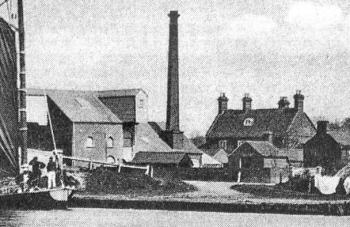 |
|
c.1900
|
|
Wroxham
Steam Mill |
 |
|
c.1900
|
|
Wroxham steam mill, built beside the Bure was technically in Hoveton and was built over a cut on the north east bank. It is unlikely the mill was ever water powered, it simply used the river for transport and as a means to obtain water for the steam engine. The main structure was built of brick with a pantile roof with two lucums, one accessed via the river and the other over the road. |
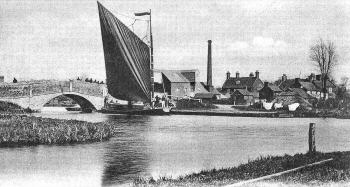 |
|
c.1900
|
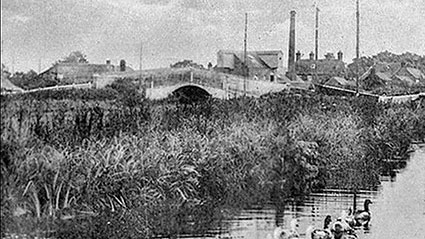 |
|
c.1901 |
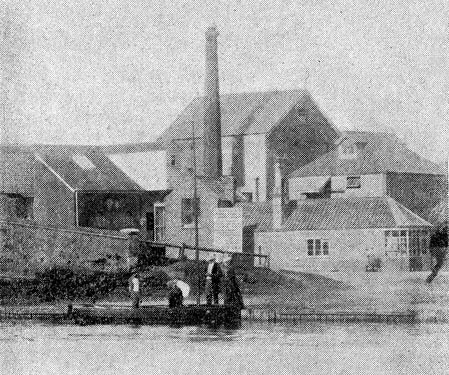 |
c.1910 |
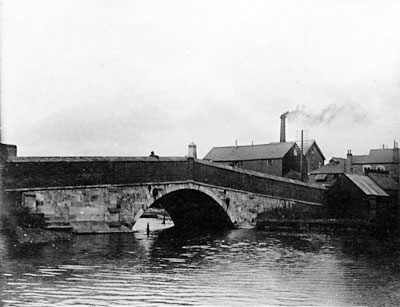 |
c.1920 |
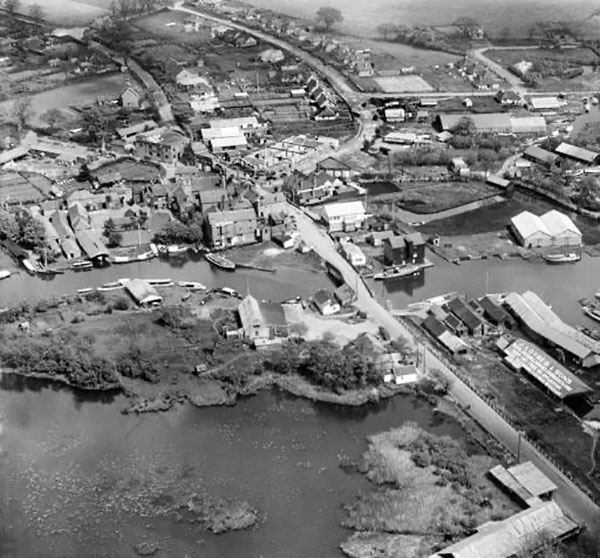 |
1928 |
|
The 1890 Ordnance Survey map lists the building as a flour mill. By the 1970s the only remaining section of the building was what was possibly the old bakery and this had been converted into a fish & chip shop. In 2003 the site was occupied by two restaurants and a variety of small businesses. |
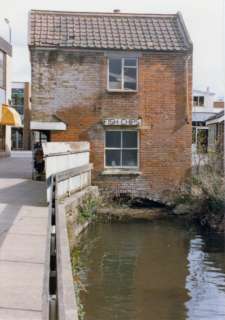 |
|
23rd
April 1977
|
I can give you a bit more information about the steam mill at Wroxham Bridge. I was taken in there by my grandfather just before the mill was pulled down in the early 60s and it's remained a very vivid memory. The only remaining part is 'Ken's Traditional Fish and Chips' now, but I remember that this was the mill office where all the sales were done. The Granary was the most famous part of the mill: it stood on the other side of the Norwich Road (still on the Hoveton side of the river) on what is still called Granary Staithe - it featured on all the postcards and looked like a mill, so people often called it such although it was only a granary; I can remember some of the last trading wherries (then under power and not sail) loading there. |
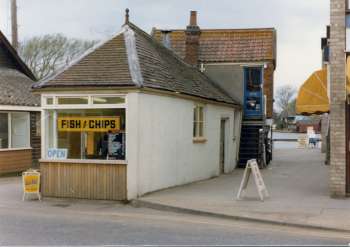 |
|
23rd
April 1977
|
I read with interest your article on Norfolk Mills and was surprised and delighted to know that there had been a windmill near Wroxham Bridge. I had no idea about the Windmill but did know about the bakery. About a month ago, in the course of researching my mother's family history, I went to Wroxham and Hoveton. I have been there before - probably as a child in the latish '40's and a couple of times since. My mother's aunt, Emmeline Baldwin, born Catfield, married a Frank Riches. I am not sure where he came from but according to his grave in Hoveton Churchyard he was "not of this Parish" but he was their Churchwarden for many years and was followed in this job by my mother's eldest brother. Frank Riches and Emmeline Baldwin had run the Bakery on Wroxham Bridge. There was the bakery which I believe was at the back, the shop and a tearoom. Frank Riches was a master baker. I met him once and he was also a very nice person. The Riches were my G Aunt and G uncle. The thing that intrigues me is that although my mother always told me the shop was "on the bridge" I never actually questioned her as to where exactly. I always thought, or she intimated, it was on the left as you come into Wroxham over the bridge from Norwich. The day I was in Wroxham and checking the grave in Hoveton Church I met an absolutely delightful elderly lady who was paying her respects to her deceased husband. She knew the Riches well and she told me/confirmed for me, that this is where the bakery was. She also told me that she used to be sent down to buy bread as a child and dreaded going because Emmeline Riches was a fierce lady. I met her, she was my great aunt and I would agree with the lady, she was definitely a force to be reckoned with. I believe Frank and Emmeline Riches had one child only who died in infancy. When they retired they moved into a beautiful bungalow which is on the right as you go from Wroxham to Hoveton but only a short way from Wroxham. When I visited her with my mother, this was where she was living. I am attaching (I hope) a copy of the bakery (only the back is original). My husband and I are reasonably sure we got the right building because the elderly lady we met told us it was now partly a Chinese Restaurant - my husband also risked life and limb trying to cross and re-cross the road at that point. It is an incredibly busy road - it must be so different from how my mother remembered it because she used to be taken to church on a Sunday on a "buggy". I don't think that form of transport would survive there now. I hope I have the right place for the bakery, shop and tearoom, albeit in a replacement building now. |
I lived in Hoveton until the age of 26 & the recent EDP article on the devastation along the River Bure villages during 1912 caught my interest as to its possible consequences around the Wroxham area. |
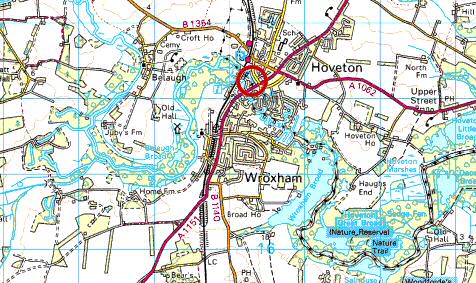 |
O.S. Map 2005 Image reproduced under licence from Ordnance Survey |
Henry and Horace Harry Burroughes appear in the 1881 census. Henry was the brother of my wife's Great Grandfather Daniel Burroughes, as was Barnabus Burroughes of Aslacton_Windmill. They were sons of Thomas Burroughes of Kenninghall_Post_Mill. The son of Barnabus Burroughes went on to sire the owners of Burroughes of Bressingham which went bankrupt a few years ago. One of the family is still alive. |
Kelly's 1879: Samual Benjamin Cooke, miller
White's 1883: Samual Benjamin Cooke, miller & Horstead. Henry Borroughes, mill manager O.S. map 1891: Flour Mill
Kelly's 1896: Horace Howlett, miller (steam), wheat meal manufacturer, coal & seed merchant, Wroxham roller flour mills; & at Salhouse, Horning & Acle Kelly's 1900: Horace Howlett, miller (steam), wheat meal manufacturer, coal & seed merchant, Wroxham roller flour mills; & at Salhouse, Horning & Acle |
If you have any memories, anecdotes or photos please let us know and we may be able to use them to update the site. By all means telephone 07836 675369 or
|
| Nat Grid Ref TG30311820 | Copyright © Jonathan Neville 2004 |